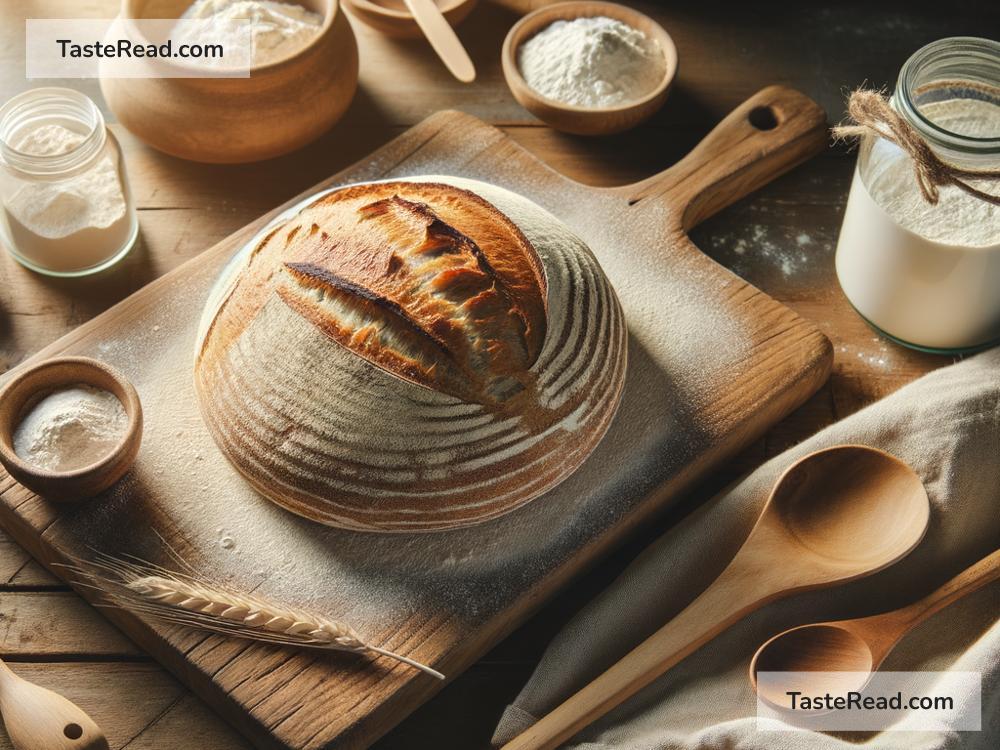Easy Homemade Sourdough Bread: A Beginner’s Recipe
If you’ve ever thought about making your own bread, sourdough might seem a little intimidating. You’ve probably seen pictures of beautiful, crusty loaves that look like they were made by professional bakers. But here’s the good news: sourdough bread can be easy! You don’t need fancy equipment or years of experience to bake your first loaf. With some patience and a simple recipe, you can make delicious, homemade sourdough bread that will impress your family and friends.
In this blog, I’ll walk you through an easy sourdough recipe that’s perfect for beginners. Let’s get started!
What is Sourdough Bread?
Sourdough bread is made using natural fermentation. Instead of store-bought yeast, sourdough relies on a “starter,” which is a mixture of flour and water that has been left to ferment. Over time, wild yeast and bacteria grow in the starter, allowing the bread to rise and creating its signature tangy flavor.
The idea of making a starter might sound complicated, but it’s actually very simple! The process takes a few days, and the only ingredients you need are flour, water, and a little patience.
What You’ll Need
To make your first loaf of sourdough bread, gather these ingredients:
For the Sourdough Starter:
– 1 cup (120g) all-purpose or whole wheat flour
– ½ cup (120ml) water
For the Bread Dough:
– 1 cup (240g) active sourdough starter
– 3 ½ cups (420g) bread flour or all-purpose flour
– 1 ¼ cups (300ml) water (room temperature)
– 2 teaspoons (12g) salt
Step 1: Making the Starter
The sourdough starter is the heart of the bread-making process. To make one:
-
Day 1: In a clean jar or bowl, mix 1 cup flour and ½ cup water until smooth. Cover loosely with a lid or cloth and leave at room temperature.
-
Day 2: Check your starter. You may see bubbles starting to form, which is a good sign! Stir it and then add another ½ cup flour and ¼ cup water. Mix well and cover again.
-
Days 3–5: Repeat feeding your starter with more flour and water each day. The mixture should become bubbly, smell slightly tangy, and double in size. Once this happens, your starter is ready to use.
Tip: If you’re not ready to bake right away, you can store your starter in the fridge and feed it weekly to keep it alive.
Step 2: Making the Dough
Once your starter is active, you can start making the bread dough:
-
Mix the Ingredients: In a large bowl, combine 1 cup of starter, water, and flour. Stir until a shaggy dough forms. Let it rest for 30 minutes. This step, called “autolyse,” helps improve the texture of the bread.
-
Add Salt: Sprinkle salt over the dough and mix well. You can use your hands to gently knead the dough for a few minutes until it comes together.
-
Bulk Fermentation: Cover the dough with a damp cloth and let it rise at room temperature for 4–6 hours. During this time, fold the dough every hour (gently stretch and fold it over itself). This helps develop strength and structure.
Tip: If you’re short on time, you can let the dough rise overnight in the fridge!
Step 3: Shaping the Dough
After the dough has risen and looks puffy, it’s time to shape it into a loaf:
-
Turn the dough onto a lightly floured surface. Shape it into a round ball or oval by folding the edges toward the center.
-
Place your shaped dough into a floured proofing basket or any bowl lined with a kitchen towel. Cover it and let it rest for another 1–2 hours (or overnight in the fridge).
Step 4: Baking
Now it’s time to bake your sourdough bread!
-
Preheat Your Oven: Place a Dutch oven or heavy pot (with its lid) into your oven and preheat to 450°F (230°C). Preheating the pot helps create steam, which gives the bread a crisp crust.
-
Score the Dough: Gently turn your dough onto parchment paper. Use a sharp knife or blade to score the top of the dough with a design or a simple slash. Scoring allows the bread to expand while baking.
-
Bake: Carefully place the dough into the preheated pot and cover it with the lid. Bake for 25 minutes, then remove the lid and bake for another 20–25 minutes until the crust is golden brown.
-
Cool the Bread: Let your bread cool completely on a wire rack before slicing. This step is important to allow the inside to set!
Why Homemade Sourdough is Worth It
Sure, baking sourdough takes time and practice, but the results are so rewarding! Homemade sourdough bread:
– Has a unique taste that’s hard to match.
– Uses simple ingredients you probably already have at home.
– Is free from preservatives and additives.
Plus, there’s something magical about turning flour, water, and salt into a delicious loaf of bread.
Final Tips for Beginners
- Be patient! Sourdough is a slow process, but it’s worth the wait.
- Don’t worry if your first loaf isn’t perfect. Every baker improves with practice!
- Experiment with your recipe. You can try different flours, add seeds, or adjust the fermentation time.
Making sourdough bread at home is easier than you think. With this simple recipe and a little practice, you’ll soon be baking loaves that rival any bakery. Give it a try, and enjoy the joy of homemade bread that’s full of flavor!
Happy baking!


